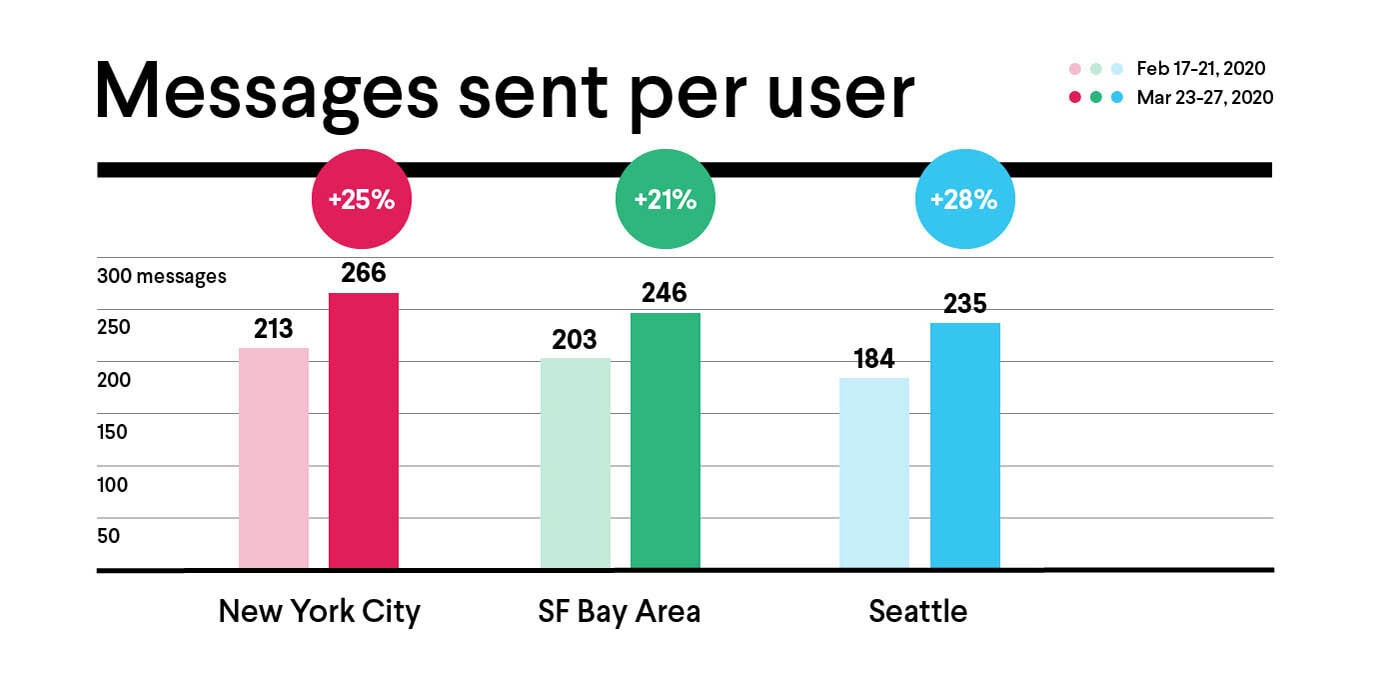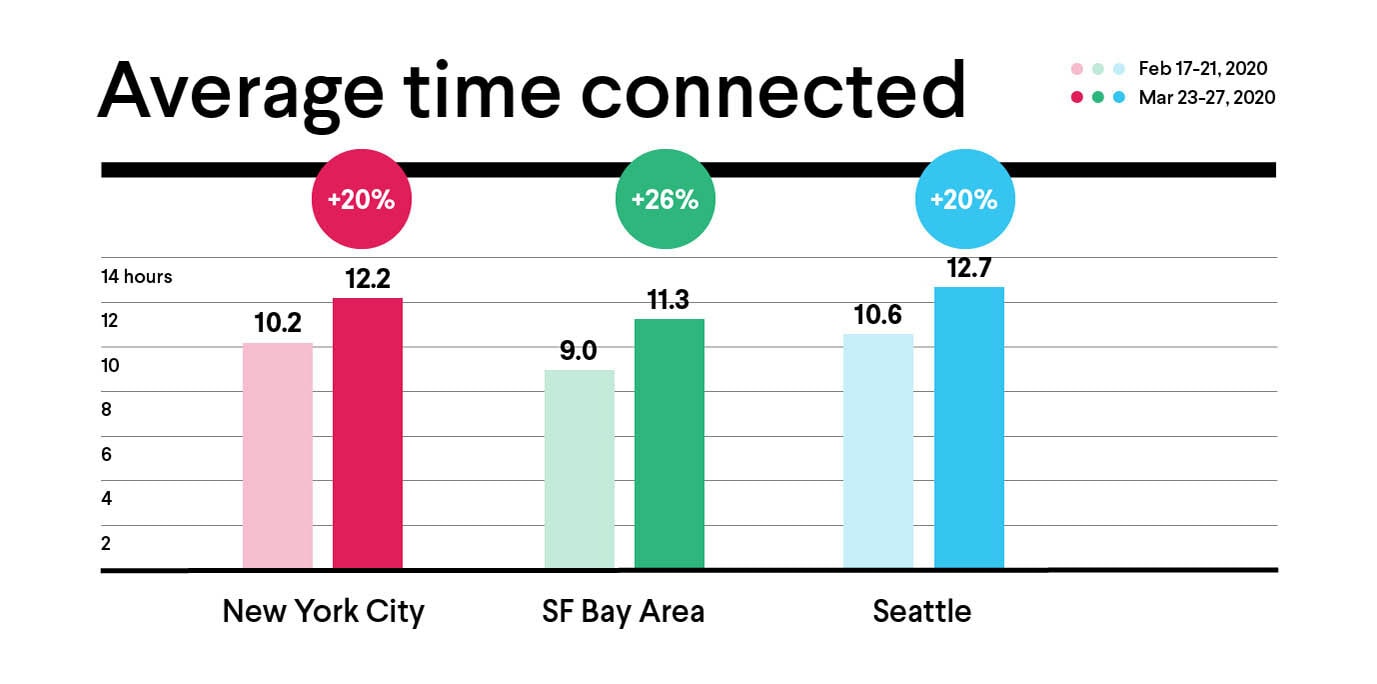For many of us over the past weeks and months, a day in the office has come to mean something completely different. Those of us lucky enough to be able to work remotely are juggling the realities of day-to-day care for the people (and pets) we love with our responsibilities to our bosses and colleagues in real time—in the midst of a global health crisis and all the concern for our family and friends that comes with it. While the business of business as usual may be continuing, there’s nothing “usual” about it.
Slack is where work happens: We’ve always said this, but it’s never been more true. We are living and working in unprecedented times, and, with millions of people transitioning to remote work practically overnight, Slack has become an increasingly vital tool for teams striving to increase their agility and do their best work.
Between February 1 and March 25, 2020, Slack added 9,000 new paid customers—an 80% increase over the full quarterly total for the preceding two quarters. And not only are more people using Slack; they’re using Slack more. As our co-founder and CEO, Stewart Butterfield, outlined in a recent series of tweets, during that same period, the number of messages sent per user per day increased by an average of 20% globally.
In the U.S., we’ve seen these global trends continue. The San Francisco Bay Area, Seattle and New York were among the first places in the nation to adopt shelter-in-place measures. As our customers in these regions shifted to remote work, the increased depth of engagement and usage shows how Slack has become a central part of their remote workday.  The average amount of time users were connected per day also increased in these regions from a global average of about nine hours a workday.
The average amount of time users were connected per day also increased in these regions from a global average of about nine hours a workday. This increase in time connected isn’t surprising, particularly when we reflect on the wide range of industries that are working overtime and making themselves available at odd hours to support our communities during this crisis. One of the things we’ve been most excited to see in this transition to remote work, however, is that while users on average have increased the time they’re connected to our platform, the majority of their day-to-day message activity is still taking place during regular business hours.
This increase in time connected isn’t surprising, particularly when we reflect on the wide range of industries that are working overtime and making themselves available at odd hours to support our communities during this crisis. One of the things we’ve been most excited to see in this transition to remote work, however, is that while users on average have increased the time they’re connected to our platform, the majority of their day-to-day message activity is still taking place during regular business hours.

Fostering connection from home
Beyond the numbers, we continue to be humbled and inspired by the stories of Slack customers around the world who are using our platform to help their newly remote teams maintain alignment, build community and support one another in this changed business environment.
TD Ameritrade
In late 2018, as part of a multi-year effort to accelerate the company’s innovation metabolism, TD Ameritrade consolidated its chat and collaboration platforms to one—Slack. During that first year, the company saw a dramatic decrease in the volume of emails as they shifted conversations to public channels. Now, with all of its nearly 10,000 employees transitioning to work from home, they’ve relied on Slack more than ever to make remote teams a new reality. TD Ameritrade has seen a significant increase in employees using Slack. In the past month, messages in Slack increased 60% and readership in public channels rose 30%.
Neal Obermeyer, senior manager of Channel Effectiveness, shared how TD Ameritrade’s corporate communications team is using Slack in new and creative ways to help leaders stay connected with their teams and help employees stay connected with each other. “While Slack was already part of our day-to-day communication, we’re finding new ways to help our teams at home feel connected and stay aligned. For example, our CIO Vijay Sankaran has been hosting “Ask Me Anything” sessions via Slack, and we’ve started a new “Tales-from-WFH” channel that quickly grew to more than 2,000 members.”
TD Ameritrade’s Safety & Health team has seen rapid growth in engagement and membership in its channel which features daily updates and tips.
As Butterfield observed in a recent keynote address, “Working through a pandemic is not just working from home. It requires an improvisational organizational agility that is hard to achieve in the best of times, let alone when employees are facing a home life where all the normal rules are off.” Slack is standing by to support you in making this transition as seamless as possible.
Looking for resources on how to help your team adapt to remote work? We’ve got those. Prefer to speak live with a human being? We’re offering free one-on-one consults to anyone who wants them. Working on the front lines fighting Covid-19 and think Slack could help your team? Email covid@slack.com for a free account.
These are challenging times, but if there’s anything Slack can do to make your remote work life simpler, more pleasant and more productive—we’re here to help.






